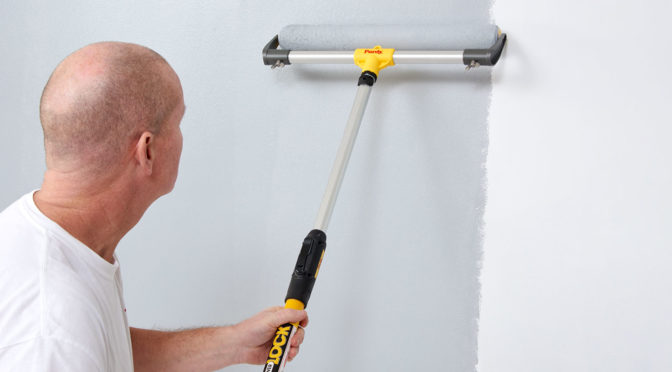How often have you run into this? The drywall has been perfectly patched, but even after multiple coats, you can still see the patch through the paint.
Whether you made the problem or you’re fixing someone else’s work, this issue—often referred to as “flashing” — can be a real problem for painters, acting as a literal blemish on your work. Thankfully, it’s easily repaired.
Flashing is caused by texture difference between two different substrates: the fresh drywall patch and the existing drywall, which already has multiple coats of paint. Dennis Fiorilli, Sherwin-Williams’ Midwest Division Product Excellence Manager, says it usually happens when painters cut corners during the prep process.
“Contractors will patch the drywall, and because that patch looks good, they try to skip the prime coat step,” Fiorilli says. “Once they do that, they start to have challenges, because they’re painting with a product that is designed to be a topcoat. But because they’re painting over a fresh substrate — one that doesn’t have multiple coats — the absorption of that topcoat is different in those areas.”
The way to avoid flashing, then, is to use a primer, which is designed to help seal that new substrate, allowing for even absorption and an even finish in the topcoat.
“Make sure you’re using the correct primer before you apply the topcoat,” Fiorilli says. “That’ll allow you to maximize that topcoat’s performance.”
“I recommend Sherwin-Williams’ Multi-Purpose Primer, since it performs great on drywall patching,” he says. “If I were a painter, I would always have a gallon of that in my van, because it has so many applications. Then for the topcoat, if you’re doing touch-up, you always want to use the same product originally used on the wall — hopefully out of the same bucket — and apply it the same way that it was originally applied, to allow for it to blend in easier.”
He notes that a low- or no-sheen flat topcoat will better hide drywall patch marks, though this may not be an option in every situation.
If a wall has multiple drywall patches, Fiorilli recommends priming the entire wall and repainting it to ensure an even finish and make the touch-up work invisible. But if drywall patching was only needed for a single area, then it’s okay to prime only the affected area, with light feathering out from the patch site to ensure an even texture.
“One coat of primer should be enough,” Fiorilli says. “Allow that to dry, which typically takes one to four hours, depending on your primer. Then you can put your appropriate topcoat over that.”
But technique isn’t everything. Fiorilli notes that it’s important to use the right products and tools for the job.
For best results, he says, “you’ll want to use the right roller cover that work best with your primer or topcoat. That will help you get the best hide and finish, which makes your project look better.”
But how do you find the right roller cover or brush for the job? Should you use a Purdy® Marathon® or a WhiteDove™, for example? Fiorilli recommends visiting your local Sherwin-Williams store, where experienced representatives can give you advice tailored to your project.
You can also check out Sherwin-Williams’ Brush & Roller Selection Guide, which recommends specific tools based on the paints or primers you’re using.
If you’re still encountering flashing after all of that, the problem may be a faulty drywall patch rather than an issue with the painting process.
“We’re only as good as the patch we’re going over,” Fiorilli says. “So if you apply a primer over it, and you’re still seeing a bump from that patch or pinholes from your patchwork, additional prep may be needed. Maybe an additional skim coat or additional sanding could be required to even that substrate out, so that it can accept that topcoat and allow that finish to blend in evenly.”
But for most jobs, Fiorilli says it’s a relatively simple process: “If you’ve got a good substrate, you just need a prime and a topcoat, and then you should be good to go.”
Read more stories about coatings products and application in the Pintor Pro magazine archive.




